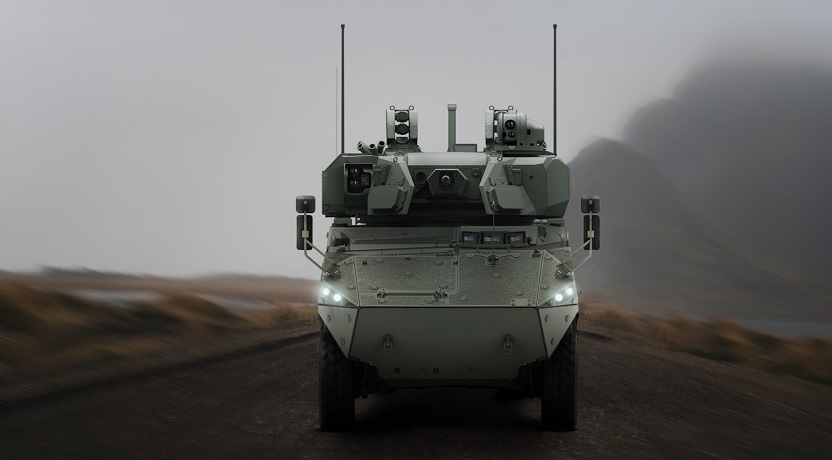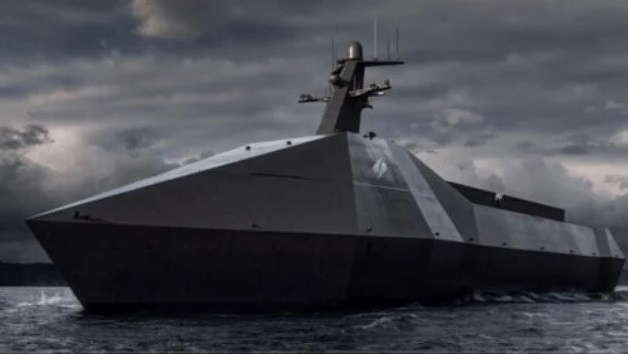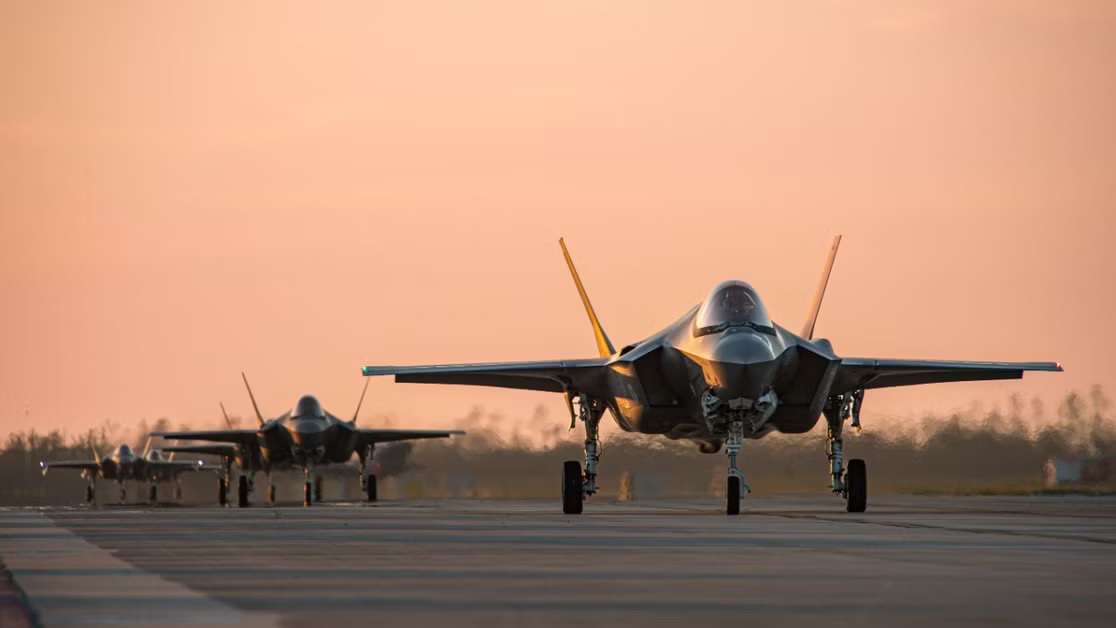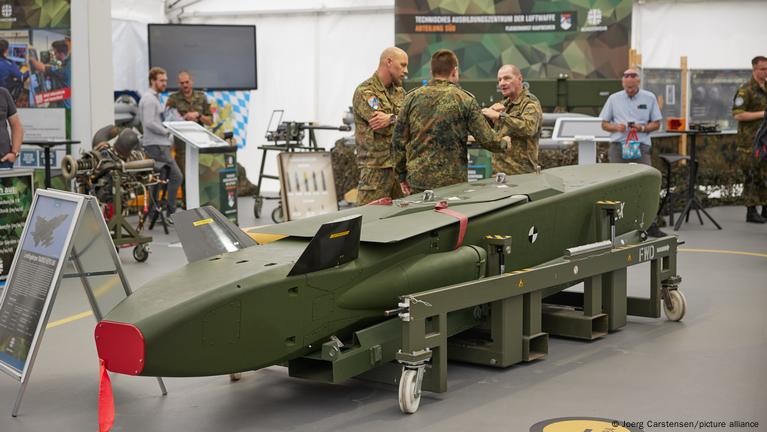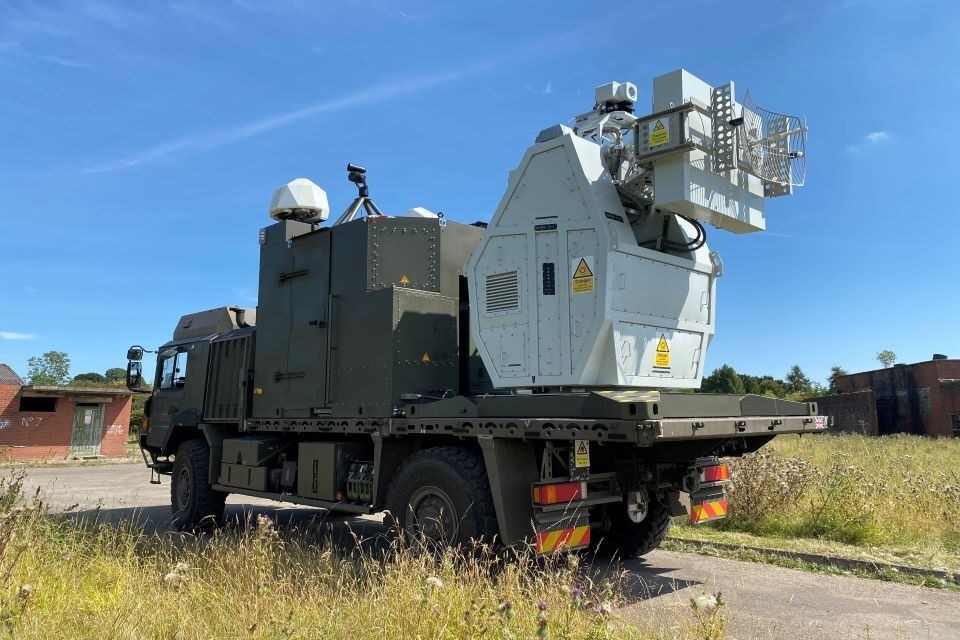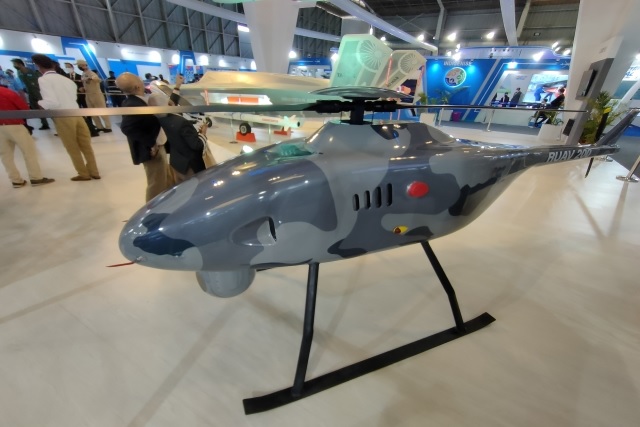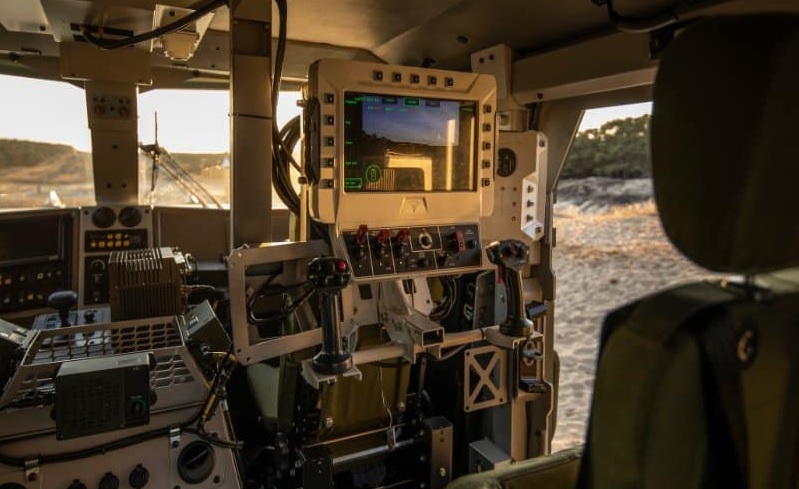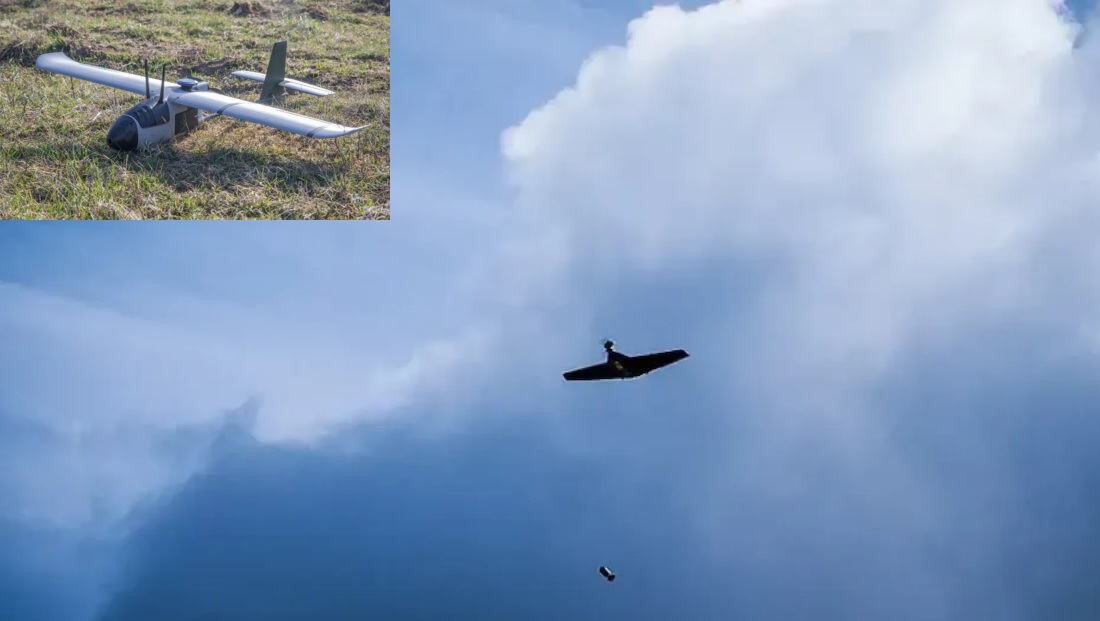India
India has achieved another milestone in its journey toward defence self-reliance with the successful preliminary sea trials of a powerful, indigenously developed 651 kW Water-Jet Propulsion System. This advanced marine technology has been developed jointly by the Defence Research and Development Organisation (DRDO) and private-sector giant Larsen & Toubro (L&T) under the DRDO’s Technology Development Fund (TDF) scheme. The successful testing took place aboard one of the Indian Navy’s Fast Interceptor Crafts. This new propulsion system is not just a technological upgrade—it represents a major leap in India’s ability to design and produce cutting-edge naval equipment. What makes it even more significant is that the system is designed entirely in India, with more than 70% of its components being indigenously sourced. It’s a true reflection of the government’s ‘Aatmanirbhar Bharat’ (self-reliant India) vision, particularly in the strategically important defence sector. Unlike conventional systems that use external propellers, this water-jet propulsion mechanism uses a high-powered pump to draw water in and expel it at high speed to create thrust—based on Newton’s third law of motion. This design provides superior control, rapid acceleration, and enhanced manoeuvrability. Such features are especially critical during high-speed operations in shallow coastal waters or in tight maritime zones, where precision and quick response are key. One of the standout advantages of this system is its low acoustic signature. Because there are no exposed propellers and the water flow is managed internally, the system generates less noise and vibration. This stealth capability is essential during covert naval missions, surveillance patrols, or anti-smuggling operations where avoiding detection is crucial. Additionally, the internalized mechanics result in less wear and tear, making the system more reliable and easier to maintain over time. The successful preliminary sea trials confirm that the system performs efficiently in real operational environments. According to defence insiders, further trials and refinements will likely follow, but the success so far opens the door for widespread deployment of the system in India’s growing naval fleet. It is expected to power a range of Fast Interceptor Crafts and small patrol vessels used by the Navy and Coast Guard for coastal defence, high-speed interdiction, and maritime surveillance missions. This achievement also highlights the increasing importance of private-sector players like L&T in India's defence landscape. With access to advanced manufacturing facilities and engineering talent, such collaborations are accelerating the pace of innovation and reducing dependency on foreign technology. In the broader context of national security and maritime dominance, this development positions India to better secure its coastline, monitor its waters, and respond rapidly to emerging threats—entirely with homegrown technology.
Read More → Posted on 2025-04-18 14:43:57World
In a move that underscores growing European interest in AI-driven defence technologies, Czech technology firm Retia has entered into a strategic partnership with Israeli defence tech company Axon Vision. This collaboration is focused on advancing the electronic systems inside military armoured vehicles, aiming to deliver next-generation situational awareness and threat response capabilities. The heart of this partnership lies in the integration of Axon Vision’s EdgeSA system—an advanced artificial intelligence-based situational awareness platform—into the latest variant of the PANDUR 8×8 EVO armoured vehicle, developed by Tatra Defence Vehicle (TDV). The system will be marketed not only to the Czech Armed Forces but also to a wider international clientele, especially across Europe. EdgeSA isn’t just another sensor or camera—it’s an intelligent, real-time fusion engine that gathers data from various onboard sensors to create a comprehensive, 360-degree battlefield view. This capability allows vehicle crews to identify and assess threats even with closed hatches, making operations safer and more efficient under combat conditions. By reducing the workload on the crew and aiding quick decision-making, the system significantly boosts both survivability and mission effectiveness. To package and promote the new capabilities, Retia has launched SAAV (Situational Awareness for Armored Vehicles)—a complete offering that includes both the EdgeSA system and Retia’s integration expertise for different vehicle types. The decision to adopt Axon Vision’s system followed a rigorous competitive evaluation, where the AI-powered solution reportedly outperformed all other contenders. Jan Mikulecký, CEO of Retia, emphasized the importance of working with reliable and cutting-edge partners to meet the high standards of modern defence needs. “We create products that meet the highest standards, and for that, we need partners with advanced technology. Axon Vision fits that role perfectly,” he noted, referring to the joint efforts on the PANDUR 8×8 EVO platform. Tatra Defence Vehicle, which is playing a key role in this collaboration, also sees this partnership as a continuation of long-standing Czech-Israeli defence ties. TDV’s CEO, Tomáš Mohapl, highlighted that Israeli partnerships have consistently strengthened the capabilities of their armoured vehicles. He also hinted at broader ambitions, saying that the same technology would enhance TDV’s other platforms like the TADEAS 6×6, improving their competitiveness in global markets. From the Israeli side, Axon Vision is equally optimistic. CEO BG. (Ret.) Roy Riftin described their system as a game-changer in armoured warfare. “Our AI-powered situational awareness technology is redefining how armoured vehicles operate. This partnership shows our expanding footprint in Europe and our commitment to bringing cutting-edge solutions to modern battlefields,” he said. Axon Vision’s technology is designed to be modular and platform-agnostic, meaning it can be adapted to a wide range of vehicle types and operational environments. The company’s systems are already deployed across several military domains globally, demonstrating their versatility on land, at sea, and in the air. The strategic cooperation between Retia and Axon Vision signals a significant step forward in the digital transformation of armoured vehicles. With battlefields becoming increasingly data-driven, the integration of artificial intelligence into core defence systems may soon become the standard—rather than the exception—in modern military operations.
Read More → Posted on 2025-04-18 14:34:06India
India is on the verge of a major leap in its precision strike capability as the Defence Research and Development Organisation (DRDO) prepares to test a new and advanced variant of the Smart Anti-Airfield Weapon (SAAW). Unlike its earlier version, this upgraded weapon will feature a state-of-the-art Electro-Optical (EO) seeker that allows it to track and strike moving targets with pinpoint accuracy — a major breakthrough in indigenous strike weaponry. The SAAW, originally designed to destroy stationary high-value enemy infrastructure such as runways, radar stations, and bunkers, is a lightweight, precision-guided glide bomb developed primarily by DRDO's Research Centre Imarat (RCI), Hyderabad. It weighs around 125 kilograms and can be launched from fighter jets like the Jaguar, Su-30 MKI, Hawk, and potentially the Rafale. Earlier versions of the SAAW relied on GPS and Inertial Navigation Systems (INS) to reach their targets with a range of up to 100 kilometres. These guidance systems enabled accurate strikes against fixed targets but had limitations when engaging mobile threats. Recognizing the need for more flexible and dynamic attack options, DRDO has now incorporated an EO seeker in the latest variant of SAAW. Electro-Optical Seeker: A Major Technological Leap The Electro-Optical seeker uses advanced imaging systems—likely a combination of infrared and high-resolution video cameras—to lock onto targets visually. This means the weapon doesn’t need to rely solely on pre-fed coordinates or GPS signals. It can adjust its path in the terminal phase of flight by tracking the real-time movement of its target, even if it's on the move or attempting to evade detection. This visual targeting capability gives the SAAW a "fire-and-forget" advantage. Once released by the pilot, the weapon autonomously navigates to the designated area and identifies the target on its own, ensuring greater hit accuracy even under heavy jamming or electronic warfare conditions. Key Features and Specifications of the EO-Enhanced SAAW: Weight: ~125 kg Range: 100 kilometres Warhead: Designed to penetrate reinforced structures or disable runways Guidance System: Combined GPS-INS in standard version; EO seeker in advanced version Deployment Platforms: Su-30 MKI, Jaguar, Hawk, and possibly Rafale Target Capability: Fixed infrastructure and now mobile military units (such as missile launchers, command vehicles, convoys) Fire Mode: Fire-and-forget with autonomous target acquisition in EO variant Wings: Foldable design for aerodynamic efficiency and long-range gliding Strategic Importance With this upgrade, the SAAW is no longer limited to strategic strikes on enemy infrastructure. It can now be deployed in fluid battlefield environments to target moving platforms, such as mobile surface-to-air missile systems, artillery units, or moving command posts. This adaptability is particularly useful in mountainous or remote terrains like those found along India's borders, where mobile enemy systems are frequently deployed and repositioned. Furthermore, the long standoff range of 100 kilometres ensures that the launching aircraft can stay out of reach of enemy air defences while executing the strike. This feature is essential in modern aerial warfare, where survivability and stand-off capability are as crucial as accuracy. Towards Operational Deployment DRDO is now preparing for a fresh series of flight tests scheduled around mid-2025, potentially at test ranges in Chandipur (Odisha) or Pokhran (Rajasthan). These trials will involve launches from key Indian Air Force aircraft, with a particular focus on validating the EO seeker’s ability to function in day and night conditions, challenging weather, and against simulated mobile targets. Before these airborne trials, the EO seeker's imaging and tracking systems have already undergone rigorous ground testing. Engineers have also reworked the internal systems of the weapon to accommodate the EO seeker without compromising range or flight stability. The fact that the new seeker adds such a dramatic capability without increasing the overall weight or reducing performance shows how refined DRDO’s design approach has become. A Step Closer to Self-Reliance This development aligns with India’s broader goal of strengthening its self-reliance in defence manufacturing. The EO-equipped SAAW not only meets evolving operational requirements but also demonstrates that Indian defence technology is progressing to match global standards in smart munitions. Once testing is complete and operational clearance is granted, the new SAAW could become a core component of India's tactical airstrike doctrine — enhancing its ability to neutralize enemy capabilities quickly and accurately without entering high-risk combat zones. With this move, India is set to boost its precision strike arsenal, readying a next-generation glide bomb that combines stealth, flexibility, and lethality in a single platform.
Read More → Posted on 2025-04-18 14:30:30World
Hamas has firmly signaled its rejection of Israel’s latest ceasefire proposal, demanding a more comprehensive agreement that includes a complete end to the war in Gaza. This development comes amid continued Israeli airstrikes across the densely populated Palestinian territory, where the humanitarian crisis is worsening by the day. On Thursday, Khalil al-Hayya, Hamas’s chief negotiator, made it clear that the group would not accept what he described as “partial agreements” designed to serve Israeli Prime Minister Benjamin Netanyahu’s political interests. Speaking in a televised address, he emphasized that Hamas wants a full-scale deal that includes a total cessation of hostilities, the withdrawal of Israeli forces from Gaza, a large-scale prisoner exchange, and the start of reconstruction efforts. Israel had offered a 45-day truce in exchange for the release of 10 Israeli hostages held by Hamas. In return, Hamas demanded the release of 1,231 Palestinian prisoners and unimpeded humanitarian aid into Gaza, which has been under total blockade since early March. However, a major sticking point in the proposal was Israel’s demand for Hamas to begin disarming — a condition Hamas categorically rejected. According to sources, Hamas submitted its written response to the ceasefire plan through mediators. Their stance has not changed: they want a single, comprehensive deal, not a phased approach that could leave crucial matters unresolved. The situation on the ground in Gaza continues to deteriorate. On the same day Hamas rejected the proposal, civil defense teams reported that Israeli airstrikes killed at least 40 people, mostly in makeshift camps for displaced families. In one of the deadliest incidents, two missiles hit tents in Al-Mawasi, an area previously designated by Israel as a “safe zone,” killing 16 people, including many women and children. Survivors described a sudden explosion that turned tents into firetraps. Strikes were also reported in Beit Lahia, Jabalia, and Gaza City. In Jabalia, a strike on a Hamas command and control center reportedly resulted in the deaths of 13 people, including members of the Asaliya family and several people sheltering at a school. Gaza's civil defense says the ongoing offensive has devastated areas already overwhelmed with displaced civilians. Israel has intensified its military operations in northern and southern Gaza, and now says it has converted 30 percent of the strip into a “buffer zone.” The United Nations reports that more than 500,000 Palestinians have been newly displaced since these operations resumed in March, calling the situation the worst humanitarian disaster of the war. Qatar, which has served as a key mediator along with Egypt and the U.S., blamed Israel for the collapse of the previous ceasefire agreement. During a visit to Moscow, Emir Sheikh Tamim bin Hamad Al-Thani stated that “Israel did not abide by the agreement” reached earlier this year. Meanwhile, Gaza faces severe shortages of fuel, medicine, water, and food. The Israeli Defense Minister recently said Israel would continue blocking aid, which Hamas condemned as an intentional war crime aimed at starving the population. The International Committee of the Red Cross also voiced its outrage after one of its bases was struck in Gaza — the second such incident in recent weeks. According to the health ministry in Gaza, at least 1,691 people have been killed since Israel resumed its large-scale assault last month. This brings the total death toll in Gaza to over 51,000 since the war began following Hamas’s attack on Israel on October 7, 2023, which left 1,218 people dead in Israel, most of them civilians. With no breakthrough in sight and the humanitarian situation growing more dire, the prospect of a peaceful resolution remains distant. Hamas’s rejection of the latest truce offer underscores the complexity of reaching a lasting ceasefire — one that satisfies both parties’ core demands and puts an end to the suffering of millions caught in the conflict.
Read More → Posted on 2025-04-18 14:28:15India
India has firmly rejected recent media reports suggesting its interest in joining the UK-Japan-Italy-led Global Combat Air Programme (GCAP), a multinational initiative to develop a sixth-generation stealth fighter. Officials from the Indian Air Force (IAF) clarified that no formal talks or requests have taken place with any of the GCAP partners. Launched in 2022, GCAP aims to build a next-generation fighter jet by 2035 with cutting-edge features such as advanced stealth, directed-energy weapons, and integration with unmanned aerial systems. The project is being spearheaded by major defence players—Britain’s BAE Systems, Japan’s Mitsubishi Heavy Industries, and Italy’s Leonardo—with an estimated development cost of $32.5 billion. The consortium has been actively looking for new partners to share costs and contribute technologically, and countries like India were seen as potential candidates. However, Indian defence officials have put such speculation to rest. “There have been no talks with Japan, nor have we requested to join the program,” an IAF official confirmed. While the UK and Italy have expressed interest in India joining the project, and Japan appeared open to it, India has clearly opted to stay committed to its indigenous fighter development efforts. This decision is a reaffirmation of India’s strategic ‘Atmanirbhar Bharat’ (self-reliant India) policy, especially in the defence sector. At the heart of this policy is the Advanced Medium Combat Aircraft (AMCA)—India's own fifth-plus generation stealth fighter jet currently under development by the Defence Research and Development Organisation (DRDO) and Aeronautical Development Agency (ADA). Though there was an informal briefing by the UK Ministry of Defence in 2022—when GCAP was still evolving from the Tempest project—no formal engagement followed. During that briefing, the possibility of shared development, including engine technologies potentially involving Rolls-Royce, was discussed. Rolls-Royce, Safran (France), and General Electric (USA) have all shown interest in co-developing a 110-130 kN thrust-class engine for AMCA, promising India full control over intellectual property rights—an essential aspect of strategic independence. AMCA: The Crown Jewel of Indian Aerospace Ambitions The AMCA is being developed as a 5.5-generation multirole stealth fighter—technologically superior to current 4.5-gen aircraft like Rafale and nearly on par with 5th-gen jets like the F-35. It is intended to bridge the gap between current fifth-generation fighters and future sixth-generation concepts. Key features of the AMCA include: Stealth Design: Internal weapons bay, radar-absorbent materials, and minimal radar cross-section Supercruise Capability: Ability to fly at supersonic speeds without using afterburners AI-Integrated Avionics: For automated threat detection and decision-making Sensor Fusion: Advanced infrared and radar systems providing a 360-degree battlefield view Modular Open Architecture: Enabling seamless integration of future tech upgrades The prototype rollout is expected by 2028, with the first squadron ready for induction by 2035. The IAF plans to acquire 126 AMCA jets by 2040, starting with the Mk1 variant powered by the GE F414 engine. The later Mk2 version will be equipped with the more powerful, co-developed engine currently under negotiation. A Vision Beyond AMCA India’s decision to focus on AMCA rather than joining GCAP or even the European Future Combat Air System (FCAS) also indicates a longer-term vision. The country aims to develop its own sixth-generation fighter aircraft by the 2040s, targeting induction around 2050. Technologies being tested and integrated in AMCA will serve as the technological base for this future platform. The IAF believes that success with AMCA will equip India with the necessary skills in stealth design, advanced materials, propulsion, avionics, and weapons systems—all essential for a credible sixth-generation aircraft development program. Conclusion: India’s refusal to join the GCAP sixth-generation fighter initiative is not a rejection of global collaboration, but a strong message about national capability and strategic autonomy. By doubling down on the AMCA program, India is not only investing in an advanced airpower platform but also laying the foundation for its future aerospace dominance—on its own terms.
Read More → Posted on 2025-04-17 16:13:40World
Sweden is taking a bold step toward deepening its defence ties with Latin America by seeking parliamentary approval for a high-value sale of up to 12 Saab JAS 39 Gripen E/F fighter jets to Peru. The move marks a significant potential milestone for both nations: for Sweden, a chance to expand its aerospace influence; for Peru, an opportunity to modernize an ageing air force with cutting-edge technology. The proposed deal, valued at around $2 billion, includes not only the aircraft but also unspecified air defence systems. It was recently submitted as part of Sweden’s supplementary budget for 2025, highlighting its strategic importance. If passed by the Swedish Parliament—a step considered likely due to Sweden’s strong support for defence exports—the deal would pave the way for a formal government-to-government agreement. This approach aligns with Peru’s procurement preferences, giving the deal a stronger chance of success. Peru, facing the pressing need to replace its decades-old Mirage 2000 and MiG-29 fighters, has already earmarked $2 billion through its Public Debt Law for this initial batch of 12 jets. This is part of a broader $3.42 billion program to acquire 24 new fighter jets in total, with a second phase planned for 2026. The Gripen E/F has emerged as a front-runner in the competition, going head-to-head with top Western platforms like the U.S. F-16 Block 70 and France’s Dassault Rafale. What sets the Gripen apart is its modern suite of capabilities—advanced AESA radar, powerful electronic warfare systems, and efficient operating costs. Designed to work effectively in tough and varied terrains, the Gripen can also take off from short or improvised runways, a practical advantage in Peru’s diverse geography that includes jungle, mountains, and coastline. But Sweden’s offer goes far beyond simply supplying jets. The proposed deal includes elements of technology transfer and local industrial collaboration, modeled after the successful Gripen program in Brazil. This could mean assembling parts of the aircraft or setting up maintenance facilities within Peru, creating skilled jobs and technical expertise locally. It also opens the door for future defence cooperation across South America, with Brazil, Colombia, and possibly Peru sharing common platforms. Deliveries could begin as early as 2028 and extend to 2030. The primary production would take place in Sweden, but there’s potential for additional support from Embraer’s facilities in Brazil, which are already involved in Gripen production. This collaborative model would not only streamline logistics and maintenance across the region but also strengthen regional defence ties. Strategically, Sweden’s push into Peru represents a broader shift in the region’s defence posture. Latin American countries have traditionally leaned toward U.S.-made equipment, but Sweden’s Gripen has recently gained traction. If the deal goes through, it would solidify Saab’s growing footprint in the region and promote interoperability among air forces using the same platform. However, the path isn’t entirely free of hurdles. The Gripen’s GE-F414 engine is American-made, and its export to a third country like Peru may require U.S. government approval. Additionally, geopolitical considerations may come into play, especially as other major defence players eye the Peruvian market. In summary, Sweden’s proposed Gripen sale is more than just a fighter jet transaction—it’s a strategic partnership opportunity. For Peru, it represents a leap toward a modern, capable air force. For Sweden, it's a bid to secure a long-term presence in Latin America’s defence market, build industrial bridges, and shift the balance of regional airpower. If all goes well, this deal could reshape the future of South American air defence.
Read More → Posted on 2025-04-17 16:11:33India
India is rapidly emerging as a serious contender in the global arms market, thanks to its aggressive push to export low-cost, high-demand artillery ammunition. As Western nations struggle with production bottlenecks and rising costs, New Delhi has stepped in with a game-changing offer: 155mm artillery shells priced as low as $300 to $400—nearly one-tenth the cost of Western equivalents. This strategic move comes amid growing international demand, especially due to the ongoing war in Ukraine, which has exposed critical shortages in ammunition stockpiles across Europe and NATO countries. While the West ramps up efforts to revive dormant production lines, India never stopped making large-caliber shells. Decades of military preparedness, fueled by ongoing tensions with China and Pakistan, ensured that Indian factories remained operational and efficient. Now, the world is taking notice. Under Prime Minister Narendra Modi’s leadership, India has made arms exports a national priority, aiming to double them to $6 billion by 2029. Although it fell short of its $3.5 billion export target last fiscal year by about 30%, it still marked a monumental rise from just $230 million a decade ago. The shift reflects not only growing industrial capability but also a change in India’s strategic ambitions. Private and public defense firms across the country are responding swiftly. Companies like SMPP, Munitions India, and Adani Defence and Aerospace are either ramping up or establishing new production lines to manufacture the sought-after 155mm rounds. Some of them have already secured international orders, while Indian-made howitzers—offered at around $3 million per unit—are being marketed at nearly half the cost of their European counterparts. Ashish Kansal, CEO of SMPP, summed up the moment clearly: “With this changing scenario, definitely we see a huge, massive demand for artillery ammunition.” India's edge doesn’t just lie in cost. It also benefits from a robust domestic supply chain and a pool of trained engineers and technicians, many of whom have experience working on indigenous platforms like the Dhanush howitzer and the ATAGS (Advanced Towed Artillery Gun System), both of which are now ready for export. Retired naval commander Gautam Nanda, now a defense consultant, explained that India’s strategic environment kept its defense manufacturing in full gear while Western countries cut back after the Cold War. “There were no cuts on our production capacity,” he said, pointing to India's need to remain battle-ready. This sustained focus on readiness has positioned India to fill a crucial void in the international defense ecosystem. Countries that are not aligned with major Western powers or cannot afford NATO-standard arms are now looking toward India for reliable and cost-effective options. From African nations to Southeast Asia and parts of Eastern Europe, interest in Indian defense exports is steadily growing. The current global backdrop—rising geopolitical tensions, disrupted supply chains, and inflation in defense procurement—makes India’s offer both timely and attractive. With a mix of affordability, operational readiness, and manufacturing experience, India is not just competing—it’s shaking up the global defense market.
Read More → Posted on 2025-04-17 16:04:07World
A powerful explosion rocked Northrop Grumman’s solid rocket motor production facility in Promontory, Utah, early in the morning on April 16, 2025, causing the destruction of a building but fortunately resulting in no serious injuries. The blast, which occurred around 7:35 a.m. local time, sent shockwaves through the surrounding area and triggered an immediate emergency response from both local authorities and the company itself. The facility, known as “Rocket Ranch,” is a cornerstone of the United States’ solid rocket motor (SRM) production capability and plays a central role in some of the nation’s most critical defense and space programs. In a statement released later that day, Northrop Grumman confirmed that all employees working in or near the affected building were accounted for and that no significant injuries were reported. The company also stated that it was working to determine the cause of the incident, though details about the building’s specific function remain undisclosed. Aerial footage broadcast by local media showed the building had sustained severe structural damage, but no fire was visible at the scene. Investigators are currently examining the blast site to uncover what led to the explosion. The timing of the incident comes just weeks after a major milestone for the U.S. Air Force’s Sentinel intercontinental ballistic missile (ICBM) program. On March 6, 2025, a full-scale static fire test of the Sentinel’s stage-one solid rocket motor was successfully conducted at this very facility. The Sentinel program is designed to replace the aging Minuteman III missiles, forming the land-based leg of the United States’ nuclear triad. In total, the program will deliver 400 deployed ICBMs and an additional 259 missiles for testing and demonstration purposes. Northrop Grumman’s Promontory site has a long history in rocket propulsion, originally operated by Thiokol and later Orbital ATK before being acquired by Northrop in 2018. Today, it stands as one of the few places in the country with the capability to design, manufacture, and test large solid rocket motors. Northrop supplies approximately 90 percent of America’s SRM capacity, used in both military missiles and commercial space launches. The strategic importance of the Promontory facility cannot be overstated. Located just north of the Great Salt Lake and near the Ogden Air Logistics Complex, the site has been integral in supporting programs like the Ground Based Strategic Deterrent (GBSD), now known as Sentinel. During the competition for the GBSD contract, Northrop’s dominance in SRM production became a central issue, ultimately leading to Boeing’s withdrawal and Northrop securing the award. As of now, neither the U.S. Air Force nor Northrop Grumman has disclosed whether the destroyed building was directly linked to the Sentinel missile program or any active SRM production lines. However, given the facility’s critical role, the incident is likely to draw continued scrutiny from defense officials and industry observers. In a landscape where only one other major SRM producer—Aerojet Rocketdyne, now part of L3Harris—exists in the United States, any disruption at Promontory can have national-level implications for missile readiness and space launch timelines. Investigators are expected to provide further updates once the cause of the explosion is determined and a safety review is completed. For now, operations in the surrounding areas of the facility continue under heightened safety protocols, while the destroyed building remains cordoned off as assessments and repairs begin.
Read More → Posted on 2025-04-17 16:02:02World
In a dramatic turn that could reshape America’s missile defense strategy, Elon Musk’s SpaceX has emerged as the leading contender to build a crucial part of former President Donald Trump’s proposed “Golden Dome” — a sweeping missile shield initiative described as one of the most critical national security efforts in U.S. history. The initiative, outlined in Trump’s January 27 executive order, prioritizes the rapid development of a defense system that can detect and neutralize incoming missile threats. The order declared missile attacks as “the most catastrophic threat facing the United States,” prompting an aggressive push toward high-tech solutions from the private sector. A Powerful Tech Alliance SpaceX is not going it alone. The company is reportedly partnering with Palantir Technologies, a data analytics firm, and Anduril Industries, known for its AI-driven defense drones. All three companies are spearheaded by founders with strong ties to Trump and a shared interest in revolutionizing U.S. defense capabilities through technology. Together, this trio is proposing a bold vision: the launch of hundreds — possibly over a thousand — satellites capable of identifying and tracking missile launches anywhere on Earth. These would be supported by an additional constellation of around 200 “attack satellites” potentially armed with interceptors or laser systems. While SpaceX would focus on the detection network — what insiders call the "custody layer" — it would not be involved in the weaponization of the satellites. SpaceX’s experience in deploying and managing large-scale satellite networks like Starlink gives it a significant advantage. The company is proposing a faster-than-usual deployment timeline by reusing existing satellite and rocket technology, including the Falcon 9 launcher and previously tested spy satellite prototypes. The estimated cost for initial engineering and design work on this “custody layer” ranges between $6 billion and $10 billion. A Subscription-Based Defense? What sets SpaceX’s proposal apart is its unconventional model: rather than the U.S. government owning the defense infrastructure outright, SpaceX would offer access to it as a subscription service. The idea is similar to how cloud computing or software is offered commercially — the government pays for usage, not ownership. This model could bypass traditional defense procurement red tape, speeding up deployment and reducing initial investment. However, it has also sparked concerns within the Pentagon. Critics argue that a subscription-based missile shield could make the U.S. too dependent on a private firm and raise issues of control, long-term costs, and pricing power. Behind the Scenes: Political and Strategic Influences The bid is not without controversy. All three companies involved have close political ties to Trump. Musk himself has donated over $250 million to support Trump’s campaigns and now serves as a special adviser in the Trump administration’s Department of Government Efficiency, tasked with cutting federal spending. According to insiders, there’s growing concern that defense officials are being “deferential” to Musk and his companies, deviating from normal acquisition protocols. Retired Air Force General Terrence O'Shaughnessy, now a key adviser to SpaceX, has reportedly been heavily involved in high-level discussions with the Pentagon. General Michael Guetlein from the U.S. Space Force is overseeing talks about ownership and operational control. Options include letting SpaceX own and run its segment, the U.S. government owning the system outright, or a hybrid model. A Crowded Field, Sky-High Stakes More than 180 companies, including major defense contractors like Boeing, RTX (formerly Raytheon Technologies), Northrop Grumman, and Lockheed Martin, have shown interest in participating in Golden Dome. Startups such as Epirus, Ursa Major, and Armada are also competing for slices of the project. Lockheed Martin has already begun marketing its own concepts online. Despite the massive competition, SpaceX’s head start — thanks to existing satellite assets and deep-pocketed investment in launch capabilities — may put it at the forefront. Still, skeptics within the defense community question whether a private-sector-led initiative of this scale can deliver the reliability, security, and speed required for a national missile defense system. Pentagon insiders have cautioned that while the concept is promising, the final structure and partners of Golden Dome remain far from finalized. Changes in political direction, budget constraints, and technology hurdles could all impact the eventual outcome. What’s clear is that if SpaceX does secure the deal, it would mark Silicon Valley’s biggest breakthrough into the traditionally closed world of high-stakes military contracting — and Elon Musk’s most significant leap yet into U.S. national defense.
Read More → Posted on 2025-04-17 15:58:56World
In a major move aimed at reshaping the future of naval shipbuilding, Saronic has officially acquired Gulf Craft, a long-established shipyard based in Louisiana. This acquisition marks a turning point for the fast-growing defense technology company as it looks to rapidly expand its capabilities in building autonomous ships. The first big result of this expansion is the unveiling of Marauder, a powerful and fully unmanned 150-foot Medium Unmanned Surface Vessel (MUSV) built to serve both military and commercial missions. With over 60 years of shipbuilding experience under its belt, Gulf Craft brings to the table not just skilled labor and infrastructure, but also a deep-rooted presence on the U.S. Gulf Coast — a strategically important location for defense production. By integrating Gulf Craft into its operations, Saronic now has a well-established production hub ready to support rapid prototyping and mass production of unmanned vessels. This move is a bold step toward reducing the U.S. military's reliance on manned platforms while preparing for a future where large fleets of autonomous vessels may dominate the seas. The newly revealed Marauder is no ordinary vessel. Purpose-built from the ground up, this medium-class unmanned ship can carry up to 40 metric tons and travel as far as 3,500 nautical miles. If the mission requires it, the Marauder can remain on station for over 30 days. Importantly, the ship will use Saronic’s advanced autonomy systems that have already proven effective in smaller vessels. It’s a ship designed to be fully unmanned, which drastically reduces costs and risks compared to legacy manned ships. Saronic plans to invest over $250 million in modernizing the acquired shipyard. This includes facility upgrades, advanced machinery, and systems designed to speed up production without compromising quality. These changes are expected to allow Saronic to eventually build up to 50 unmanned ships every year — a huge leap in capacity at a time when the U.S. Navy and allied forces are actively seeking new, cost-effective maritime solutions. The company has also made it clear that its ambitions go beyond just this acquisition. While the Gulf Craft site will serve immediate production needs, Saronic is laying the groundwork for a much larger initiative called Port Alpha. This future facility, which Saronic plans to develop with a staggering $2.5 billion investment, will be the world’s most advanced shipyard dedicated entirely to building autonomous surface vessels. It is expected to create thousands of new jobs and dramatically boost the U.S.'s ability to produce next-generation naval platforms at scale. This acquisition isn’t just good news for Saronic and its customers — it’s also a boost for Louisiana’s economy. By retaining Gulf Craft’s existing workforce and planning to hire more than 500 new employees over the next few years, Saronic is investing in American labor and helping revive the local shipbuilding industry. This includes opportunities for skilled trades like welders and electricians, as well as new roles for engineers, naval architects, and technologists. Leaders in Washington have welcomed this development as a vital step toward restoring the strength of America’s maritime industrial base. As global competition in defense shipbuilding intensifies — particularly from China — this move helps strengthen the U.S. position. Saronic’s vertically integrated approach, domestic supply chain focus, and rapid development timelines make it a key player in efforts to modernize and expand the Navy’s capabilities. In simple terms, Saronic isn’t just building ships — it’s building the future. With the acquisition of Gulf Craft and the launch of the Marauder, the company has taken a giant step toward becoming a powerhouse in autonomous naval technology. More importantly, it’s helping lead the charge in ensuring America remains at the forefront of maritime innovation and defense strength.
Read More → Posted on 2025-04-17 15:52:54World
Turkey is making a renewed push to return to the United States' F-35 fighter jet programme, signaling a potential shift in its defense procurement priorities. According to recent reports, senior officials from Turkey's Ministries of Defence and Foreign Affairs are considering redirecting $1.4 billion—previously earmarked for a separate F-16 fighter jet deal—towards the purchase of F-35s, provided that Washington agrees to Ankara’s re-entry into the programme. This development appears to follow a key phone conversation in March between Turkish President Recep Tayyip Erdoğan and former U.S. President Donald Trump. The call reportedly touched on the possibility of Turkey rejoining the F-35 programme, from which it was expelled in 2019. Turkey’s removal was a result of its decision to purchase the Russian-made S-400 air defense system, which the U.S. viewed as incompatible with NATO standards and potentially compromising to the stealth technology of the F-35. Since then, Turkey has not only pushed for a refund of the $1.4 billion it had already invested in the F-35 programme but also turned its attention toward acquiring 40 F-16 Viper jets and modernizing 79 of its existing F-16s. The total deal, which received U.S. approval earlier this year, is worth up to $23 billion. However, the agreement has yet to be finalized, and talks have reportedly slowed as Turkey recalibrates its priorities. The six F-35 jets that had been manufactured for Turkey before its expulsion are still in storage in the U.S., and Ankara is keen to either take delivery of those aircraft or find a way to resume procurement under a fresh agreement. However, Washington’s stance remains firm—removal of the S-400 systems continues to be a core condition for Turkey’s re-admittance to the F-35 programme. In a parallel move, Turkey is also exploring other options to modernize its air force. Negotiations with the United Kingdom are reportedly underway for the possible purchase of 40 Eurofighter Typhoon jets, which would offer Ankara an alternative path to maintaining airpower parity in the region. The recent developments suggest Turkey is playing a strategic balancing act: keeping its options open with both U.S. and European suppliers, while leveraging its previous investment in the F-35 programme. Whether the U.S. government will consider Turkey’s return remains uncertain, especially in light of broader geopolitical tensions and NATO dynamics. Nonetheless, Ankara’s renewed interest in the F-35s signals a potential thaw in defense relations and may open a new chapter in the complex U.S.-Turkey defense partnership—if political and military conditions align.
Read More → Posted on 2025-04-17 15:50:30World
In a major leap toward India’s defence self-reliance goals, British aerospace giant Rolls-Royce has formally proposed the co-development of a brand-new 110 kilonewton (kN) thrust engine specifically for India's upcoming Advanced Medium Combat Aircraft (AMCA). What makes this offer unique isn’t just the power or advanced engineering—but the promise of full Intellectual Property Rights (IPR) being handed over to India. Unlike previous international collaborations where critical technologies remained under foreign control, Rolls-Royce’s new engine will be a clean-slate design tailored solely to India’s operational needs. The company made it clear that this engine will not be a variant of the one being developed for the UK-led sixth-generation Global Combat Air Programme (GCAP), but an entirely different machine. The AMCA, spearheaded by India’s DRDO and Aeronautical Development Agency (ADA), represents India’s jump into the elite category of 5.5-generation stealth fighter jets. The aircraft is envisioned to feature supercruise capability (sustained supersonic flight without afterburners), advanced stealth shaping, and high maneuverability—demands that require an equally sophisticated engine. Rolls-Royce’s 110kN-class engine aims to deliver just that. According to the company, the proposed engine will generate around 75kN of dry thrust and 110kN with afterburner, with scope for further power growth to 120-130kN in the future. This makes it ideal for the AMCA Mk2 variant, while the initial AMCA Mk1 will take flight with imported GE F414 engines. GE has already agreed to transfer technology for its F414 engine under a separate agreement, but Rolls-Royce is banking on its unique offer of an India-specific, fully indigenous engine to sway policymakers. Another standout aspect of the Rolls-Royce offer is the comprehensive nature of the technology transfer. It promises not just manufacturing expertise (the “know-how”), but also the in-depth engineering understanding (the “know-why”)—an essential factor for India’s Gas Turbine Research Establishment (GTRE) and local industry to independently modify, upgrade, or even export the engine in the future. This proposal strongly aligns with India’s ‘Atmanirbhar Bharat’ initiative, which focuses on achieving strategic autonomy in defence production. Full ownership of the engine would allow Indian engineers to enhance and adapt the platform over time, without depending on foreign companies for upgrades, licenses, or spare parts. While the new engine might include select cutting-edge technologies being explored for sixth-generation fighters—such as heat-resistant materials, improved fuel efficiency, or stealth-enhancing nozzles—it will not use the adaptive cycle engine architecture being developed for the GCAP. The GCAP engine is expected to support over 130kN of thrust and have variable performance modes to suit different missions, including powering advanced systems and unmanned teaming drones. In contrast, the proposed AMCA engine will prioritize reliability, modularity, and supercruise capability—features most suitable for a stealth fighter designed to operate across varied theatres in the Indian subcontinent. The modular design would also make maintenance easier and enable long-term upgrades across the AMCA’s expected multi-decade service life. Rolls-Royce is not alone in this race. French engine-maker Safran has also offered a joint development program, based on its M88 engine used in the Rafale, and has promised full technology transfer. Meanwhile, American company GE is offering an enhanced version of its battle-tested F414 engine, which powers the Tejas Mk2 and is already selected for the AMCA Mk1. But Rolls-Royce’s pitch is distinct. It offers India not just an engine, but the strategic capacity to design and evolve its own jet propulsion technology in the years ahead. The company’s plan includes support for local manufacturing and aims to turn India into a hub for future aerospace innovation. As per current timelines, AMCA's first prototype could take to the skies by 2029 or 2030, with production versions expected to enter Indian Air Force service around 2035. If chosen, the new engine could not only power the AMCA Mk2 but also lay the foundation for future platforms such as the Twin Engine Deck-Based Fighter (TEDBF) for aircraft carriers or even a sixth-generation Indian fighter further down the line. For India, this proposal could mark a transformational shift—not just in its fighter jet program, but in its entire aerospace ecosystem.
Read More → Posted on 2025-04-17 15:47:54World
Ukraine has officially revealed a powerful new addition to its growing missile arsenal — a cruise missile named Bars, capable of hitting targets up to 800 kilometres away. The announcement was made during the Ukrainian Weapons 2024 briefing by Herman Smetanin, Ukraine’s Minister for Strategic Industries. Bars joins a new family of advanced missiles developed domestically in Ukraine, including Palyanytsia, Peklo, and Ruta. While specific technical data about Bars remains classified, officials confirmed that it is a medium-range cruise missile, developed by Ukraine’s private sector, and is believed to share many specifications with the Peklo missile system. Key Features and Capabilities of Bars Cruise Missile: Type: Medium-Range Cruise Missile Estimated Range: 700 to 800 km Purpose: Precision strikes deep into enemy territory Origin: Developed by Ukraine’s private defence sector Deployment: Expected to be inducted into Ukrainian Defence Forces soon Production: Designed for mass production within Ukraine Bars is specifically designed to strike military infrastructure and high-value targets deep inside Russian territory, giving Ukraine a strategic advantage without relying on foreign-supplied long-range systems. The missile's capability allows it to disrupt logistics hubs, command centres, and airbases far from the frontlines. Ukraine's Expanding Missile Arsenal The unveiling of Bars highlights Ukraine’s broader effort to boost domestic missile production. By the end of 2024, the country had increased its missile output eightfold, a significant achievement amid ongoing conflict. In November 2024 alone, Ukraine reportedly produced over 100 missile systems. President Volodymyr Zelensky announced plans to manufacture 3,000 cruise and drone missiles in 2025. The upgraded R-360 Neptune cruise missile — Ukraine's indigenous system — has already seen its range extended to 1,000 kilometres. In August 2024, a new Ukrainian ballistic missile system was successfully tested, marking another major advancement in local defence technology. Strategic Significance The Bars missile demonstrates how Ukraine is rapidly evolving its technological base to meet modern warfare demands. Its development reflects a broader shift towards self-reliance, rapid innovation, and long-range precision capabilities. The ability to mass-produce such weapons locally means Ukraine can maintain and expand its missile forces without external delays or restrictions. In the face of an ongoing war, Bars is not just a missile — it symbolizes Ukraine's determination to push back, innovate, and strike where it matters most.
Read More → Posted on 2025-04-17 15:44:33World
Russia has issued a stern warning to Germany, saying that any Ukrainian attack using German-supplied Taurus missiles would be viewed as Germany entering the war as a direct participant. This sharp message came from Russia’s Foreign Ministry following comments from Friedrich Merz, Germany’s likely next chancellor, who recently showed willingness to send the long-range missiles to Ukraine — a significant shift from the cautious stance of the current government under Olaf Scholz. Speaking on Thursday, Russian Foreign Ministry spokeswoman Maria Zakharova made it clear that Germany would face serious consequences if Taurus missiles were used against Russian infrastructure. She specifically pointed to attacks on strategic facilities like the Kerch Bridge — a vital supply line connecting Russia to Crimea — as an example that could trigger a direct response. This is not the first time the Kremlin has raised alarms about the Taurus system. Russia has consistently criticized the West for sending long-range weapons to Ukraine, arguing they allow Kyiv to target deep within Russian territory and escalate the conflict. But Moscow’s warning to Berlin is particularly serious, framing the potential delivery of Taurus missiles as a direct act of war. Friedrich Merz, who leads the Christian Democratic Union (CDU) and is expected to become Germany’s new chancellor soon, has clearly signaled a break from Scholz’s restrained approach. Following a devastating Russian missile strike in the Ukrainian city of Sumy, which killed at least 34 civilians and injured over 100, Merz called it “a serious war crime.” He stressed the need to help Ukraine “get ahead” in the war and said Germany must be prepared to act in coordination with its allies. “Our European partners are already supplying cruise missiles,” Merz said in a television interview. “The British are doing it, the French are doing it, and the Americans are doing it anyway. If it’s jointly agreed, then Germany should take part.” Merz also dismissed the idea that offering peace without strength would bring results. He argued that Russian President Vladimir Putin only understands pressure. “Putin will not respond positively to weakness and peace offers,” he said. The Taurus missile system, jointly developed by European defense company MBDA and Sweden’s Saab, has a range of over 500 kilometers. That’s further than the UK’s Storm Shadow or the US ATACMS. These missiles are specifically designed to penetrate deep into hardened targets like bunkers and bridges — making them ideal for strikes on critical Russian logistics routes and command centers. Ukraine has long requested these weapons to strike behind Russian lines and limit Moscow’s ability to resupply its forces. One of the key targets reportedly being considered is the Kerch Bridge — a powerful symbol of Russia’s grip on Crimea. However, the idea of sending Taurus missiles has caused a political divide within Germany. Olaf Scholz, the outgoing chancellor, has repeatedly warned that supplying such systems could escalate the conflict into a broader European war. He has instead pushed for measured support that avoids making Germany a combatant. Still, the political winds in Berlin are shifting. Merz, though once a hawk calling for missile deliveries as retaliation, adopted a more cautious campaign tone — possibly to secure a coalition deal with the center-left Social Democrats (SPD). While SPD co-leader Lars Klingbeil has voiced support for Ukraine, parts of his party remain uneasy about deeper involvement. Their internal vote this week on the coalition agreement could influence how far Germany goes in arming Ukraine. Germany is under growing pressure from allies. The UK and France have already supplied long-range missiles. The US, too, has delivered powerful ATACMS systems to Kyiv. Britain has even publicly backed Berlin’s right to send Taurus missiles. But with Russia’s threats now directly tied to specific targets like critical transport infrastructure, Germany’s next steps will carry major consequences. Caught between alliance commitments, internal political divisions, and Russia’s warnings, Berlin faces a defining choice. As Merz prepares to take charge, his decision on the Taurus missiles could reshape not only Germany’s role in the Ukraine war but also the future security landscape of Europe itself.
Read More → Posted on 2025-04-17 15:36:53World
In a major step forward for modern warfare, the British Army has successfully tested a UK-developed Radiofrequency Directed Energy Weapon (RF DEW) that can take down entire swarms of drones in an instant. This breakthrough system, which uses high-frequency radio waves to disable or destroy the electronic components of drones, promises a powerful, low-cost defence solution in an era of increasing unmanned aerial threats. During the recent trials, the RF DEW system tracked and neutralised more than 100 drones, including two swarms brought down in a single engagement. The system caused drones to malfunction or crash by interfering with their electronics, and it did so with near-instant precision. Remarkably, it is estimated that each "shot" from this advanced weapon costs just 10 pence — making it far more economical than conventional air defence missiles, which can cost thousands or even millions per round. The UK Government has already invested over £40 million into the development of this cutting-edge technology. More than 135 highly skilled jobs are being supported across Northern Ireland and the South-East of England thanks to this investment, highlighting not only its strategic military value but also its role in boosting the national economy. Sgt Mayers of the 106 Regiment Royal Artillery made history during the trials by becoming the first British soldier to successfully take down drones using this radiofrequency weapon. He praised the system, saying it was easy to learn and use, and expressed optimism that with further enhancements in range and power, it could become a vital tool in the UK's Layered Air Defence strategy. The weapon’s development is being led by Team Hersa — a collaboration between the UK Ministry of Defence’s procurement wing, the Defence Science and Technology Laboratory (DSTL), and a consortium of British industry partners headed by Thales UK. Thales employs around 100 experts in Northern Ireland on this project, with another 30–35 supporting roles in Chelmsford, Essex. The company is known for its leadership in airspace protection systems and continues to advance this technology alongside government researchers. Nigel MacVean, Managing Director at Thales Integrated Airspace-protection Systems, emphasized the importance of the program, stating that Thales remains committed to pushing the boundaries of what’s possible in this field. The RF DEW system, according to him, represents a leap forward in counter-drone technology and showcases the UK’s innovation potential. The successful trial comes at a time when the use of drones in conflicts is surging. Just last year, Ukraine faced over 18,000 drone attacks. Such figures underline the urgency for modern defence solutions capable of protecting troops and assets from low-cost, mass-produced aerial threats. As part of its broader “Plan for Change,” the UK Government is set to channel at least 10% of its defence equipment spending into novel technologies like RF DEW starting from 2025–26. This approach not only aims to maintain the UK's strategic edge but also to support home-grown innovation and create economic opportunities nationwide. Defence Minister Maria Eagle described the trial as a shining example of British innovation. She reiterated that investments in defence technology are not only about national security but also about driving growth across towns and cities in the UK. In today’s evolving battlefield, where drones can be deployed quickly and in large numbers, the RF DEW system offers a timely and effective solution. If further developed and deployed, it could become a core component of the UK's future defence framework — a silent, precise, and affordable weapon against one of modern warfare’s most rapidly growing threats.
Read More → Posted on 2025-04-17 15:32:59India
A Simple Understanding Article on HAL's RUAV-200 Drone Program Failure Hindustan Aeronautics Limited (HAL), a leading Indian aerospace and defence company, is under scrutiny after a national audit revealed serious flaws in one of its major drone development projects. According to the Comptroller and Auditor General (CAG) of India, the Rotary Unmanned Aerial Vehicle (RUAV-200) project launched by HAL in 2015 suffered from poor planning and execution, ultimately leading to its failure both financially and operationally. What Was the RUAV-200 Project? The RUAV-200 was meant to be a small helicopter-type drone, developed as a technology demonstrator. HAL planned this project to enter the growing market of unmanned aerial vehicles (UAVs), especially to support India’s military with surveillance and intelligence capabilities. The project had a budget of ₹23.18 crore and was seen as a stepping stone towards India’s goal of defence self-reliance under the Atmanirbhar Bharat mission. Where Did HAL Go Wrong? According to the CAG’s audit, HAL made several major mistakes: No Market Research or User Feedback: HAL began developing the drone without first checking what the Indian Armed Forces actually needed. No consultation was done with potential users like the Army, Navy, or Air Force before starting the project. Underwhelming Specifications: When the drone was finally developed, it failed to impress. The RUAV-200 could only carry a payload of 2.5 kg, fly for just 1 hour, and had a limited range of 8–10 km. These specifications are far below what is expected in modern military UAVs, which typically require at least 4–12 hours of endurance, higher payload capacities, and a range of 50–100 km or more. No Lessons Learned Report: After the project failed to attract any interest, HAL didn’t even compile a formal review or report to learn from the experience. This means there was no internal effort to analyse what went wrong or how to do better next time. Financial Impact Since the drone was not suitable for any military application and didn’t meet the needs of the forces, HAL didn’t receive a single order. As a result, the project led to a write-off of ₹9.54 crore — a clear financial loss of public money. How Does This Affect HAL and India’s Defence Goals? This failure reflects poorly on HAL’s ability to execute high-tech defence projects and raises concerns about the efficiency of public-sector defence undertakings. At a time when India is trying to reduce its dependence on imported defence technology, such mistakes make it harder to trust local capabilities. India already operates successful drones like the DRDO’s Rustom series and imports Israeli drones for surveillance and reconnaissance. Compared to these, the RUAV-200 was not competitive in performance or reliability. CAG’s Recommendations for the Future To avoid repeating these costly mistakes, the CAG has made some strong suggestions for HAL: Create a Market Research and Demand Forecasting Unit: This team would analyse the real demand and consult with military users before any project begins. Align Projects with Military Plans: Future drone projects should match the Indian Armed Forces’ existing plans like the LTIPP (Long-Term Integrated Perspective Plan) or TPCR (Technology Perspective and Capability Roadmap). Get Letters of Intent Before Investment: HAL should get early confirmation of interest from potential buyers (like the Army or Air Force) before spending crores on development. Mandatory Post-Project Reviews: Every project must end with a detailed report explaining what worked, what didn’t, and how future efforts can be improved. Final Words The failure of the RUAV-200 is a reminder that even big companies like HAL need to plan smarter and work more closely with their users. With strong reforms and better project management, HAL still has the potential to lead India’s UAV development. But to do that, it must learn from past mistakes and ensure future projects are based on real needs, not assumptions.
Read More → Posted on 2025-04-17 15:27:13World
Imagine a high-tech MQ-9B SeaGuardian silently patrolling the skies above the Black Sea, locking onto a swarm of incoming Shahed kamikaze drones—then, instead of launching missiles, it unleashes powerful, invisible beams of energy that fry the drones mid-air. This is no longer a sci-fi scenario. General Atomics has officially unveiled a laser-armed version of its MQ-9B unmanned aerial vehicle (UAV) at the Sea-Air-Space 2025 exhibition, marking a significant leap in drone warfare and defense capabilities. A Game-Changing Directed Energy Weapon The newly displayed laser system is not just a concept; it’s a podded, underwing-mounted laser weapon that fits right onto the MQ-9B. It is part of a 25-kilowatt class system, which General Atomics says can be scaled up to an astonishing 300 kilowatts, whether in pulsed or continuous wave modes. That kind of power means this drone can target and destroy small drones, incoming missiles, or other threats quickly and silently—with no smoke trails, explosions, or radar signatures. What Makes This Laser Special? At the heart of this advanced system is a Distributed Gain Laser, a special type of laser that spreads out the material responsible for amplifying the light (called the gain medium). This spread reduces the need for massive cooling systems and eliminates the need to combine multiple fiber laser beams, which is often a complex and bulky process. The result? A lighter, more efficient, and less power-hungry laser system that can be deployed not just in the air but also on land or at sea. The laser pod comes with: A 25-kilowatt distributed gain laser An ultra-high power density battery system A large optical aperture for enhanced targeting An efficient cooling system that reduces size and weight Building on Past Experience This isn’t General Atomics’ first foray into laser technology. Back in 2021, the company, in collaboration with Boeing, began developing a 300-kilowatt-class solid-state laser system for the U.S. Army. And in 2022, they successfully tested an air-to-air laser communication system, proving that lasers can do much more than just destroy—they can also provide secure, high-speed communications in contested environments. Platforms and Flexibility The laser system is designed with flexibility in mind. It can be fitted not only to the MQ-9B SeaGuardian but also to other drones like: MQ-9A Reaper MQ-1C Gray Eagle 25M SkyGuardian variants This modular, podded design means militaries can adapt and upgrade their drone fleets without needing to develop entirely new aircraft platforms. Future Possibilities Laser weapons on drones could fundamentally change how future conflicts are fought. Instead of relying solely on limited onboard missiles or external support, drones like the MQ-9B could autonomously neutralize a wide range of threats, including: Swarms of kamikaze drones Low-flying helicopters Cruise missiles Even ground targets with pinpoint precision As this technology matures, it may also find use in anti-satellite operations, missile defense, and covert electronic warfare roles, all while flying silently in international skies. The MQ-9B SeaGuardian, now with laser capabilities, represents a bold step into the future—one where drones don’t just see and surveil, but also defend and destroy at the speed of light.
Read More → Posted on 2025-04-17 15:22:27World
In a significant step toward strengthening Morocco’s defense capabilities, the U.S. Department of State has approved a potential foreign military sale of up to 600 FIM-92K Stinger Block I missiles to the North African nation. Announced on April 15, 2025, by the Defense Security Cooperation Agency (DSCA), the deal is estimated to be worth approximately $825 million and now awaits final approval from the U.S. Congress. This proposed arms sale includes not just the missiles themselves, but also a comprehensive package of support. The U.S. government and defense contractors will provide engineering assistance, technical support, spare parts, and logistics services to ensure smooth integration and operation of the missile systems within Morocco’s armed forces. The Stinger missile is not new to the battlefield—it has been a key component of short-range air defense systems since the early 1980s. However, the version Morocco is set to receive, the FIM-92K Block I, represents a significant technological leap. Unlike older models that relied only on infrared sensors to lock onto targets, the new Stinger variant features a datalink capability. This allows it to receive targeting information from its launching vehicle’s sensors, improving accuracy, especially against modern threats like fast-moving drones and low-flying aircraft. The FIM-92K is specially designed for vehicle-based launch platforms and is not typically used in shoulder-fired mode like its predecessors. Its dual-stage solid-fuel rocket motor gives it a striking range of up to 4.8 miles and the ability to hit targets flying as high as 10,000 feet. The warhead is also more advanced, featuring a proximity fuze that can detonate near a target without needing a direct hit. This is especially useful in dealing with small or fast aerial threats, such as unmanned aerial vehicles (UAVs). The DSCA emphasized that the sale aligns with the broader foreign policy and national security interests of the United States. As Morocco is designated a Major Non-NATO Ally, strengthening its defense capabilities also contributes to regional stability in North Africa and helps counter growing threats from militant groups and the proliferation of drones. In recent years, Morocco has steadily modernized its military arsenal, and this acquisition fits into its ongoing effort to build a more agile and responsive defense posture. The Stinger missile system will bolster the kingdom’s short-range air defense network and provide an effective counter to airborne threats in both conventional and asymmetric conflict scenarios. While the deal still needs Congressional approval, such sales to major non-NATO allies are usually well-received, especially when they align with U.S. interests in curbing instability in strategic regions. If finalized, this arms deal would mark another milestone in the deepening military ties between Washington and Rabat, reinforcing Morocco's role as a key security partner in North Africa.
Read More → Posted on 2025-04-16 16:06:54India
In a major boost to India’s defence manufacturing ambitions, JCBL Group’s defence subsidiary, Airbornics Defence & Space Pvt Ltd (ADSL), has signed the first-ever Defence Memorandum of Understanding (MoU) between India and Slovakia. This historic agreement was formalised during the state visit of President Droupadi Murmu to Slovakia, accompanied by a high-powered Indian business delegation. The signing of this MoU signals the beginning of a new chapter in bilateral defence cooperation between the two nations. More importantly, it is a bold stride toward India’s larger vision of becoming self-reliant in defence technologies under the Atmanirbhar Bharat and Make-in-India programmes. At the heart of this agreement is the co-development and indigenous manufacturing of next-generation defence systems, with a primary focus on light tanks, Future Ready Combat Vehicles (FRCVs), and Future Infantry Combat Vehicles (FICVs). All manufacturing activities will be undertaken in India, integrating cutting-edge Slovak technology with India’s strong industrial capabilities. Under this landmark partnership, ADSL will take the lead in building advanced subsystems for combat platforms. These include: Next-generation turret systems Remote-Controlled Weapon Stations (RCWS) Active Protection Systems (APS) Human-Machine Interface (HMI) modules These technologies are specifically tailored for use in challenging terrains and high-altitude operational zones, such as India’s northern and northeastern borders, where modernisation is critical for maintaining combat superiority. What makes this agreement even more significant is the inclusion of technology transfer from Slovakia to India. Slovakia, known for its technological advancement in defence, will share core know-how with Indian engineers and manufacturers. This move will not only raise India’s domestic defence production standards but also pave the way for future exports of Indian-made defence systems. Rishi Aggarwal, Managing Director of JCBL Group, underlined that the collaboration goes far beyond commercial interests. It is a reflection of shared strategic goals between India and Slovakia and a step forward in positioning India as a global hub for defence innovation and production. The deal is a win-win: Slovakia gets a reliable strategic partner in the Indo-Pacific region, and India enhances its capabilities through international collaboration while strengthening its position in the global arms market. As the first formal defence partnership between India and Slovakia, this MoU could serve as a blueprint for similar collaborations with other European nations. It symbolizes a forward-looking defence strategy where domestic innovation, global partnerships, and strategic self-reliance converge to build a stronger, more secure India. This agreement not only marks a historic diplomatic milestone but also strengthens India’s position in the world of advanced defence manufacturing, signaling that the country is ready to lead, innovate, and export in the defence domain like never before.
Read More → Posted on 2025-04-16 15:43:58World
Ukraine’s armed forces have taken another major step in modernizing their defense capabilities by officially approving and adopting the domestically developed B-1 unmanned aerial vehicle (UAV) for frontline operations. As the country continues to rely heavily on drones in its ongoing war against Russia, the B-1 marks a significant advancement in Ukraine's growing domestic drone industry. The B-1 UAV is designed as a lightweight, precision-strike bomber capable of staying aloft for hours thanks to its low-noise, high-performance engine. Its stealthy nature, combined with resilience to electronic warfare, makes it particularly effective in contested airspaces. Though the government has not disclosed its exact specifications—such as range, size, or cruising speed—it is confirmed that the B-1 can carry various types of ammunition. These can be used to destroy enemy personnel, armored vehicles, and other military assets, not just along the frontlines but also behind enemy lines. What makes the B-1 especially valuable is its quick deployment capability and adaptability. It can be launched and recovered with ease, allowing rapid tactical use during combat operations. The drone’s ability to carry out precise strikes adds another layer of versatility to Ukraine’s drone-based military strategy. Drones have become a central component of Kyiv’s defense system. According to Ukraine’s Minister of Digital Transformation, Mykhailo Fedorov, about 95% of the drones used by the military are now produced by Ukrainian manufacturers. This domestic production effort is not only strategic but necessary, given the scale and duration of the conflict with Russia. Ukraine has previously tested long-range drones capable of flying up to 3,000 kilometers, and the military has launched an initiative to ensure front-line units have immediate access to drones without the delays of centralized procurement. These steps aim to maintain agility on the battlefield, allowing Ukrainian troops to respond quickly and effectively. Still, while drones like the B-1 are becoming increasingly important, Ukrainian leaders continue to stress that traditional air defense systems remain essential. In early April, following a missile attack on his hometown, President Volodymyr Zelensky called for ten additional Patriot air defense systems from international allies to better protect Ukrainian cities and civilians from Russian aerial assaults. With the deployment of the B-1, Ukraine demonstrates not only technological resilience but also a shift toward self-reliance in modern warfare. The integration of such advanced homegrown systems into daily combat operations reflects Ukraine’s commitment to innovating its defense forces amid one of the most high-tech conflicts in recent history.
Read More → Posted on 2025-04-16 15:39:02Search
Top Trending
-
 Agneepath Scheme replaced with Sainik Samman Scheme 2024, Defence Minister Rajnath Singh Relaunched Agniveer Scheme
Agneepath Scheme replaced with Sainik Samman Scheme 2024, Defence Minister Rajnath Singh Relaunched Agniveer Scheme
-
 Death in Dhaka: CIA Links Surface After Putin Shielded Modi During SCO Meet
Death in Dhaka: CIA Links Surface After Putin Shielded Modi During SCO Meet
-
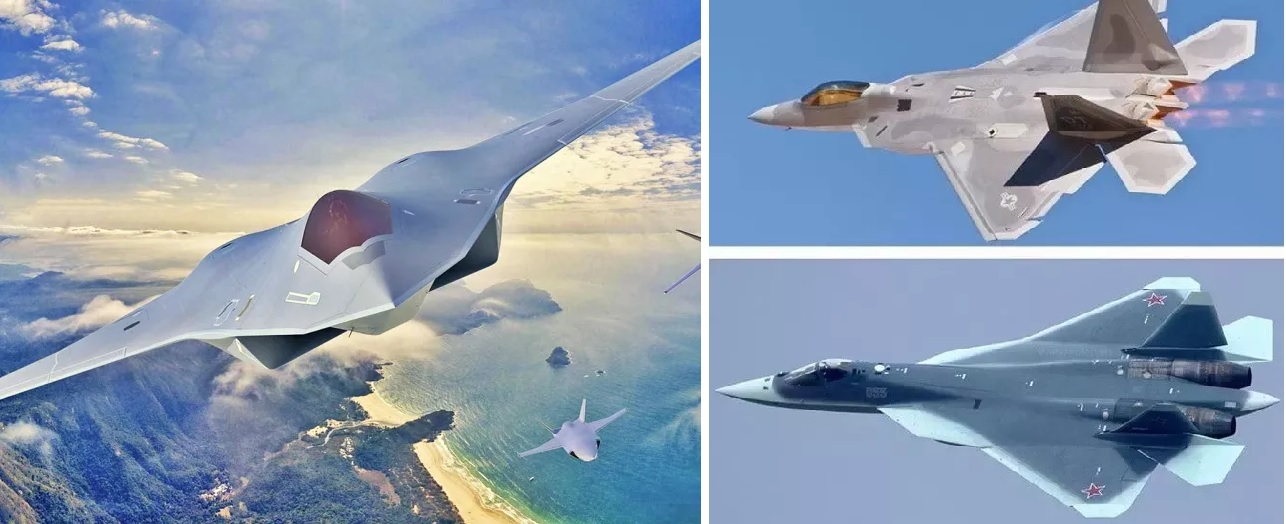 Key Differences Between 5th vs. 6th Generation Fighter Jets
Key Differences Between 5th vs. 6th Generation Fighter Jets
-
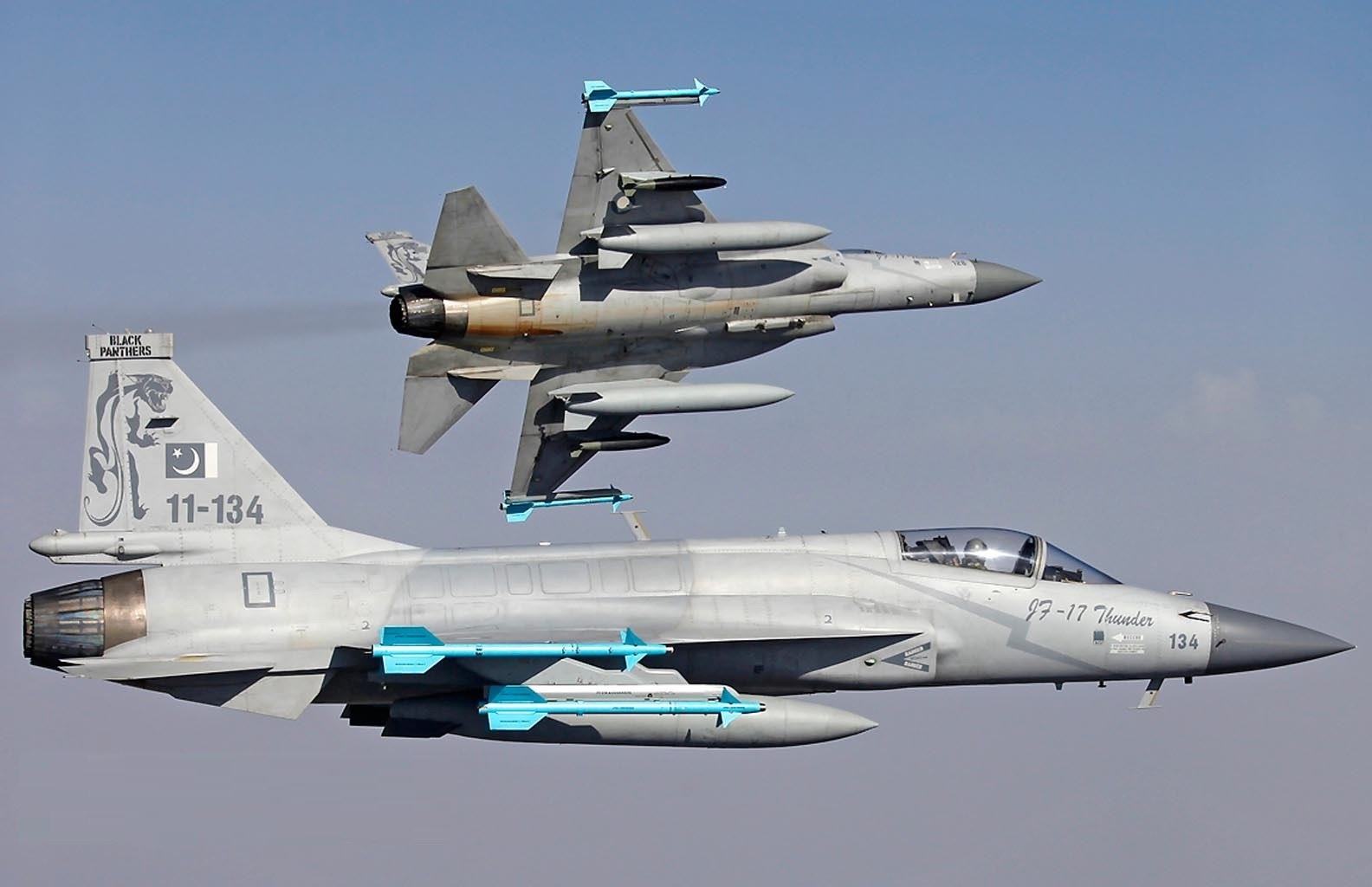 Pakistan Air Force to Unveil Stealth-Enhanced JF-17 Block 4 Fighter Jet by 2028
Pakistan Air Force to Unveil Stealth-Enhanced JF-17 Block 4 Fighter Jet by 2028
-
 India’s AMCA Engine Decision: Safran vs. Rolls-Royce Final Expected by 2025
India’s AMCA Engine Decision: Safran vs. Rolls-Royce Final Expected by 2025
-
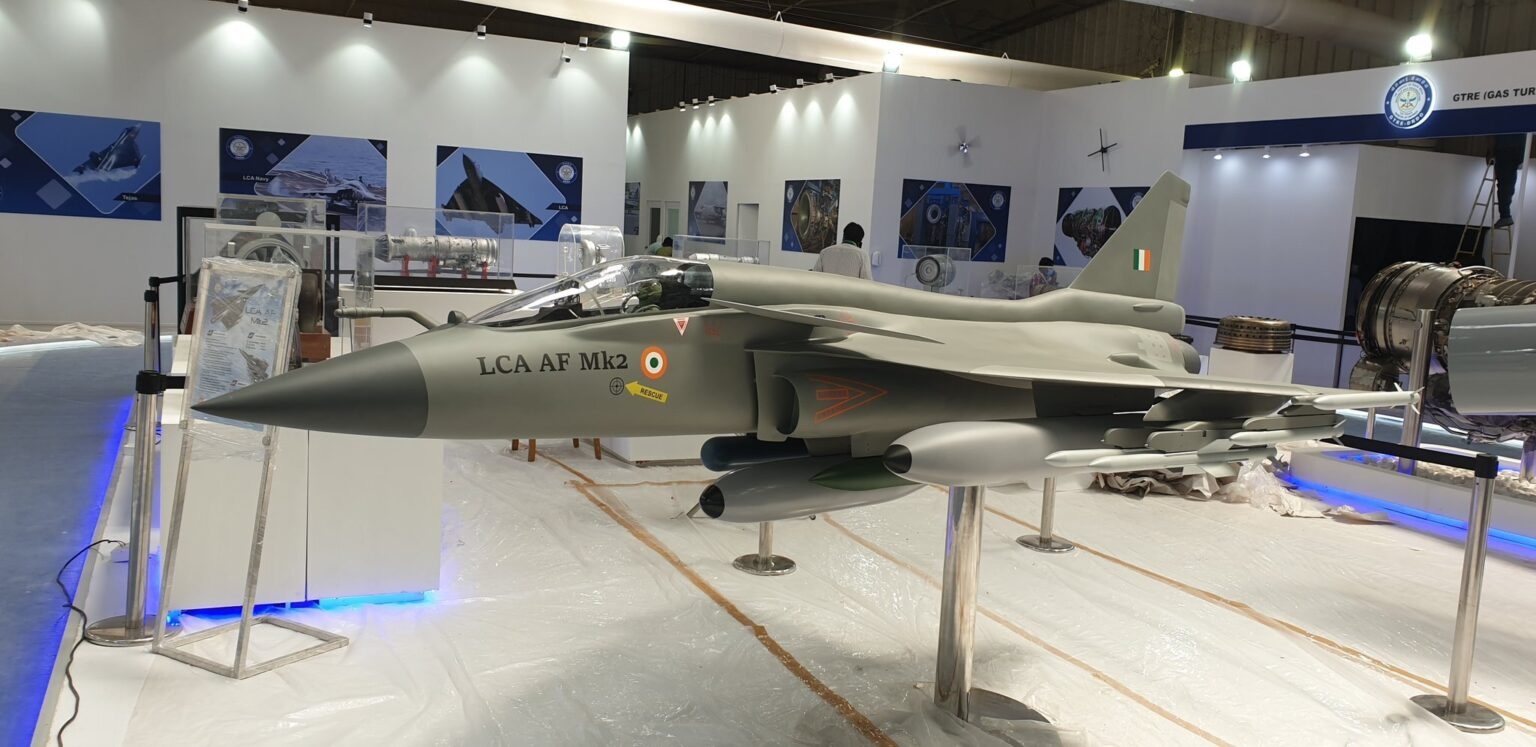 Tejas Mk2 Nears 2025 Rollout as HAL Ramps Up Final Assembly and System Integration
Tejas Mk2 Nears 2025 Rollout as HAL Ramps Up Final Assembly and System Integration
-
 Pakistan Announces 15% Increase in Defence Budget for 2024-25 Amid Economic Crisis
Pakistan Announces 15% Increase in Defence Budget for 2024-25 Amid Economic Crisis
-
 India's TEDBF Program Takes Shape First Flight by 2028: Aiming for Naval Supremacy with Advanced Stealth and Technology
India's TEDBF Program Takes Shape First Flight by 2028: Aiming for Naval Supremacy with Advanced Stealth and Technology
Top Trending in 4 Days
-
 Pakistan Army to Deploy Troops to Gaza by January 2026 Under Trump–Munir Deal, $500 Per Soldier
Pakistan Army to Deploy Troops to Gaza by January 2026 Under Trump–Munir Deal, $500 Per Soldier
-
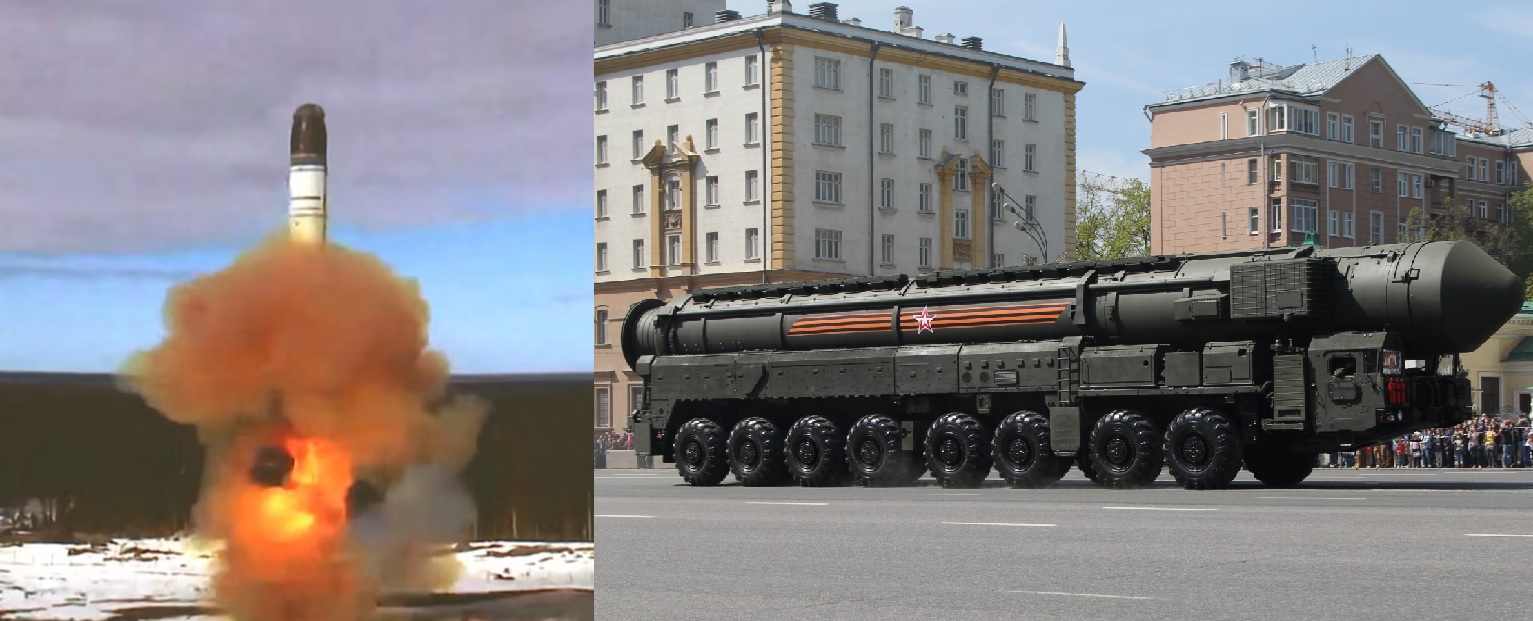 Russia Simulates Full-Scale Nuclear War in Siberia, Deploys Yars ICBMs on Combat Patrols
Russia Simulates Full-Scale Nuclear War in Siberia, Deploys Yars ICBMs on Combat Patrols
-
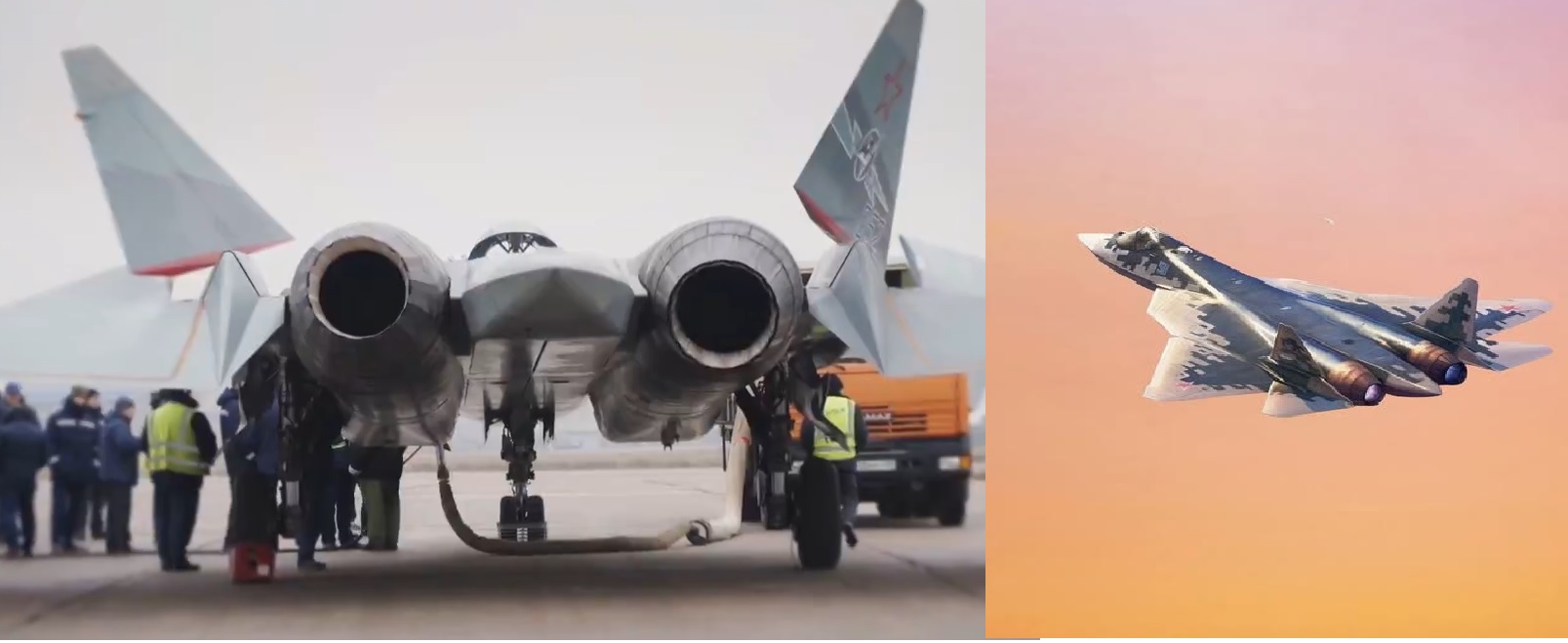 Russian Su-57 Conducts First Flight With Next-Generation Izdeliye-177 Engine
Russian Su-57 Conducts First Flight With Next-Generation Izdeliye-177 Engine
-
 Russian Strike on Mayaki Bridge Threatens Up to 60% of Ukraine’s Fuel Supply
Russian Strike on Mayaki Bridge Threatens Up to 60% of Ukraine’s Fuel Supply
-
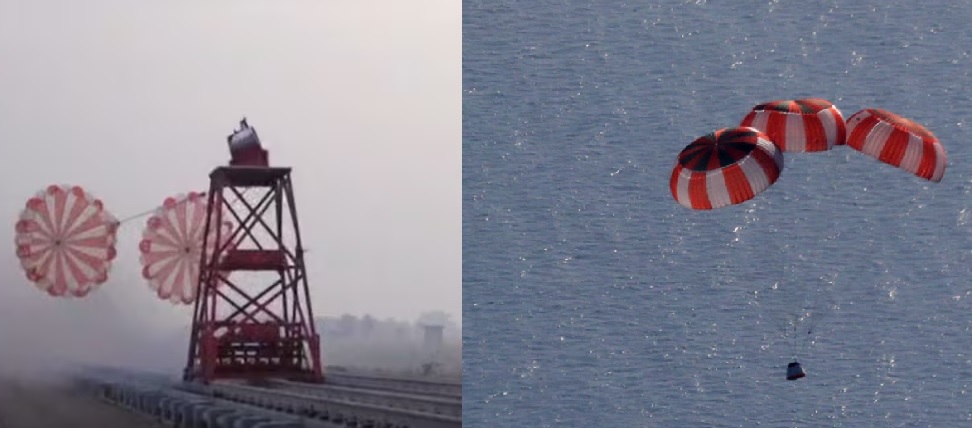 ISRO Successfully Qualifies Drogue Parachutes for Gaganyaan Crew Module
ISRO Successfully Qualifies Drogue Parachutes for Gaganyaan Crew Module
-
 U.S. Seizes China-Linked Oil Tanker Carrying Venezuelan Crude in International Waters
U.S. Seizes China-Linked Oil Tanker Carrying Venezuelan Crude in International Waters
-
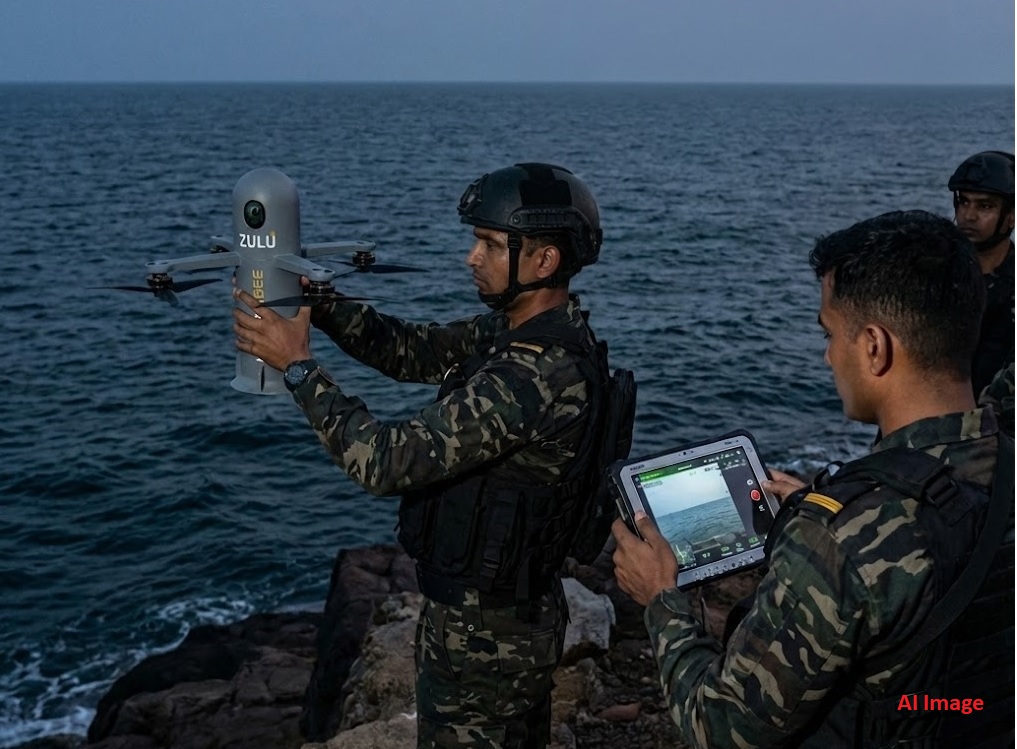 Indian Navy’s MARCOS Induct High-Tech ‘Hoverbee’ Kamikaze Drones for Stealth Operations
Indian Navy’s MARCOS Induct High-Tech ‘Hoverbee’ Kamikaze Drones for Stealth Operations
-
 Russia Brings Back Nuclear-Powered Heavy Cruiser 'Admiral Nakhimov ' After Costly Rebuild
Russia Brings Back Nuclear-Powered Heavy Cruiser 'Admiral Nakhimov ' After Costly Rebuild

